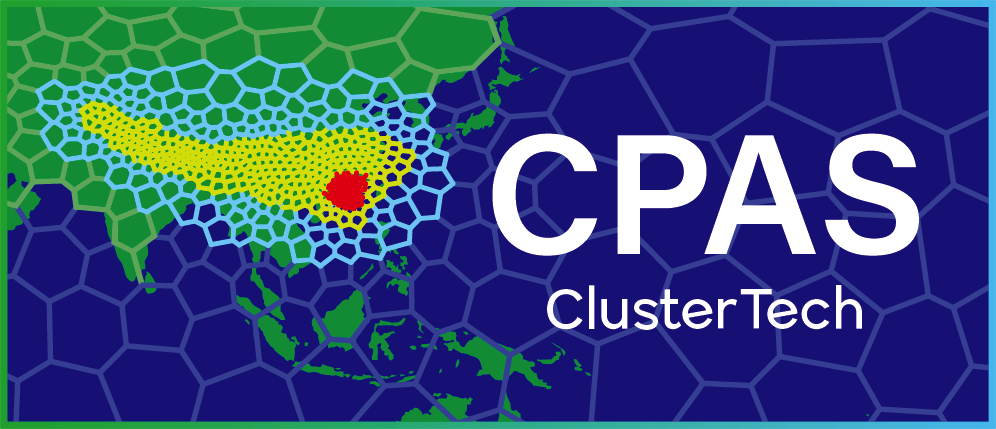Achieve 80% to pass
- The type of numerical scheme that has a CFL stability condition is:
- Explicit scheme
- Implicit scheme
- Lagrangian scheme
- None of the above
- Select all correct statements below regarding the CFL stability condition in the CPAS model.
- The smallest allowed timestep is related to the coarsest resolution.
- In the variable-resolution mesh, the timestep to be used for a cell has an upper bound according to the grid spacing between it and its neighbor cells.
- Cells of different sizes may use different timesteps.
- There is no constraint on the timestep to be used on each cell, and the user can assign it arbitrarily.
- What characteristics are there in Hierarchical Time-Stepping (HTS) in CPAS? Select all applicable items.
- Timesteps jump like Δt, 3Δt, 9Δt, … for fine and coarser resolution regions.
- Timesteps jump like Δt, 2Δt, 4Δt, … for fine and coarser resolution regions.
- HTS may result in the reduction of computational resources, as revealed in the HTS chart in the mesh generation report.
- HTS incurs some overhead, as revealed in each bar in the HTS chart having a higher height than the theoretical number of steps.
- What statements below about Customizable Unstructured Mesh Generation in CPAS are correct? Select all that apply
- Users need to prepare the specifications of mesh customization in a text file and use scripts provided to process it.
- Users operate a graphical web interface to specify the mesh customization.
- The regions or domains with specified resolutions cannot overlap.
- The regions with specified resolution must project to a rectangular shape under some map projection.
- The generated mesh works for both CPAS and MPAS-A
- What are the advantages of Customizable Unstructured Mesh Generation and Hierarchical Time-Stepping in CPAS? Select all that apply
- The user may use a larger range of resolutions practically.
- The parameterization schemes are made more flexible.
- The spending of computational resources becomes more controllable in the user's perspective. The user can decide where to put or save computational resources.
- In case gridded simulation data for a small area of the Earth is required, CPAS supports using a variable-resolution global model to provide it, without using a regional model that requires an external driving global model and handles lateral boundary data issues.
- What statements below about using fine resolution for a region of interest are correct? Select all that apply
- The t2m (temperature at 2 meters above ground level) direct model output has a smaller error due to more representative terrain height populated to finer cells.
- For locations near the coastline, higher resolution avoids misclassifying land as water and vice versa, which often makes noticeable errors in simulating the diurnal cycle of ground temperature.
- Parameterization schemes always work better with finer-resolution geographical data, achieving higher prediction accuracy.
- Land use and landcover are better resolved, which can better represent rivers, lakes, and reservoirs as water bodies in the land surface model.
- Suppose there is a global mesh with the shortest grid spacing being 2.2km and the longest grid spacing being 72.3km. The shortest vertical spacing is 44m while the longest vertical spacing is 932m. Using the recommendation of 6 s/km in designating timestep, which of the answers below best describes the smallest timestep to be used in CPAS:
- Longer than 433.8 seconds
- Longer than 5.592 seconds
- Shorter than 0.264 seconds
- Shorter than 13.2 seconds
- Using the mesh settings in the above question, how many time steps are carried out on the finest resolution cell for simulating 24 hours?
- More than 6545 steps
- More than 327272 steps
- Less than 15450 steps
- Less than 199 steps
- Which statement about the NetCDF file representing the unstructured grid, grid.nc, for a global mesh is incorrect?
- Variables latCells is a one-dimensional array.
- maxEdges must be 10
- nCells is smaller than nEdges
- Variable cellsOnCell defines the neighborhood of cells
- What vertical coordinate is used in MPAS-A / CPAS?
- Pressure-based Sigma coordinate
- Pressure-based eta coordinate
- Isentropic Theta coordinate
- Height-based Hybrid Smoothed Terrain-Following Coordinate
| Previous | Answer |
|---|
